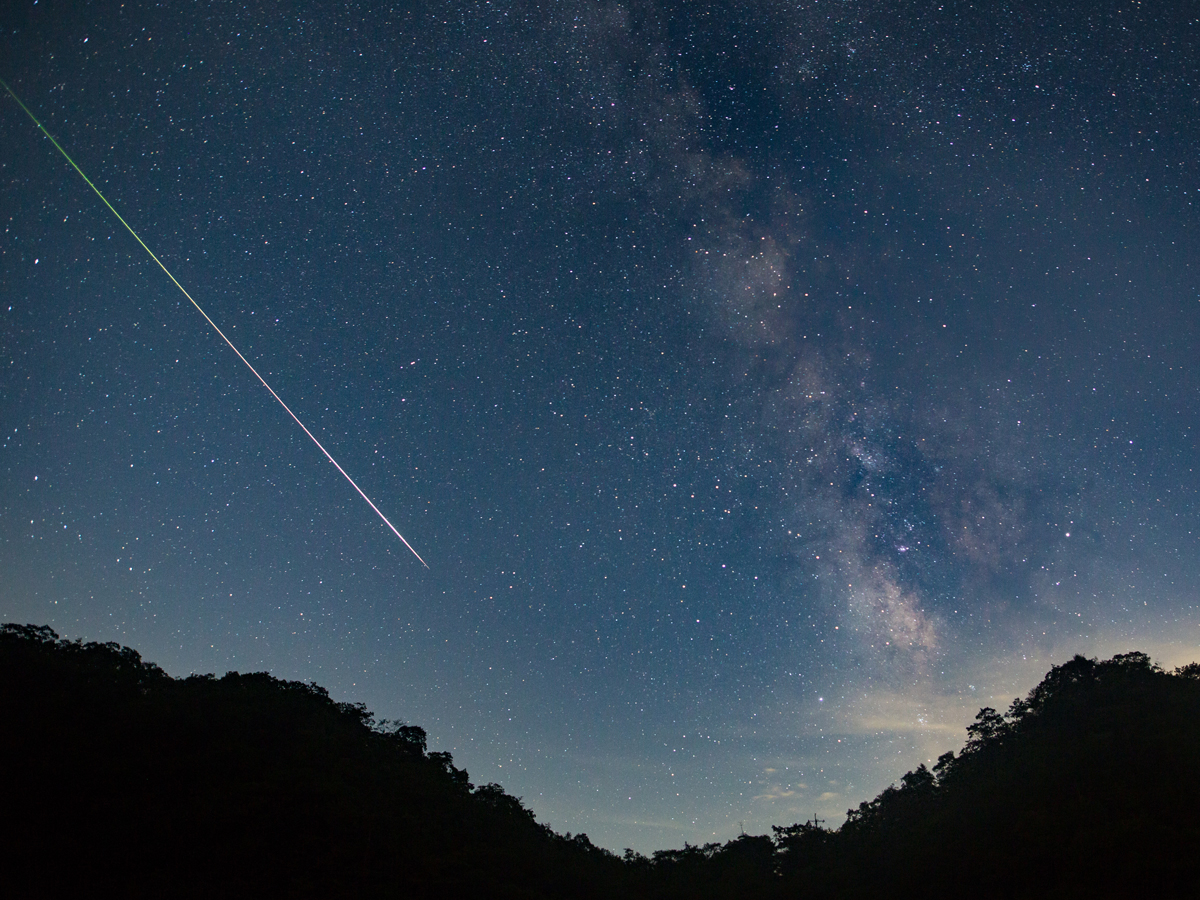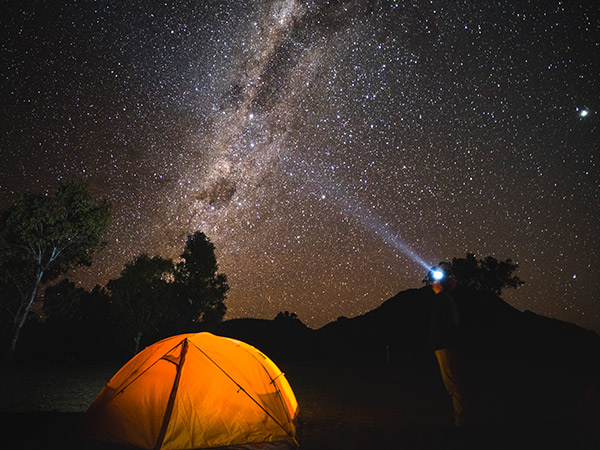14 April 2025
![]() 3 mins Read
3 mins Read

Autumn sees the start of prime stargazing season in Australia. The colder weather brings with it crisper air and clearer skies, conditions that make for prime constellation viewing. And while seeing the Milky Way in all its glory is always magical, catching a meteor shower is truly unforgettable – especially one like the Lyrids.
Over the decades, it has gained a large fanbase, with millions of people gathering to view it each year. And in 2025, your highest chance of catching a glimpse is between 16 and 25 April.
Known as one of the world’s oldest meteor showers, the Lyrids has been observed for 2700 years, with its earliest recorded sighting dating back to 687 BCE. It’s characterised by its especially bright and fast meteors, which produce occasional dazzling flashes called fireballs. From Earth, the celestial phenomenon is breathtaking.

Catching the Lyrids is an unforgettable experience. (Image: Getty Images/bjdlzx)
It all originates from C/1861 G1 – more commonly known as Comet Thatcher – discovered by amateur astronomer A.E Thatcher in 1861. As Thatcher makes its 416-year-long orbit around the sun, it leaves a long dusty trail behind it – the Lyrids meteor shower – which the Earth then passes through on its own orbit. When it does, the meteors collide with our atmosphere and disintegrate into fiery, colourful streaks in the sky.
What’s incredible about the Lyrids is that it has been known to produce up to 100 meteors during one shower alone. And while seeing that many is more of a rare occurrence, stargazers can expect up to 20 sightings during the Lyrids’ peak this year. Be sure to have your eyes peeled though – these fireballs travel at 47 kilometres per second!
While the Lyrids is best viewed in the northern hemisphere, Aussies still have an opportunity to catch a glimpse. Your best bet would be heading to one of the country’s best stargazing spots – whether that’s Earth Sanctuary in the Northern Territory or NSW’s Warrumbungle National Park.

Sleep in Australia’s first Dark Sky Park at Warrumbungle National Park. (Image: Destination NSW)
It’s also important to know that the meteor shower’s radiant – the point in the sky from which it appears – is near the constellation Lyra. While Lyra is a relatively small constellation, it contains a very bright star called Vega – which makes it easy to spot. Vega is located low in the northern part of the sky, roughly a hand-span to the left of the Milky Way.
Another handy hint is to head outside roughly half an hour before you actually plan on witnessing the Lyrids – preferably away from big cities and light pollution. This is how long it takes for your eyes to adjust properly. Bring a blanket for the cold and binoculars if you have them and lie flat on your back in an area that has unobstructed views of the sky.
The key to it all? Patience. No matter how much you prepare, there’s no rhyme or reason to these things – making it all the more special if you manage to catch a glimpse.

Be patient and you may just witness the meteor shower. (Image: Getty Images/TDub303)
LEAVE YOUR COMMENT